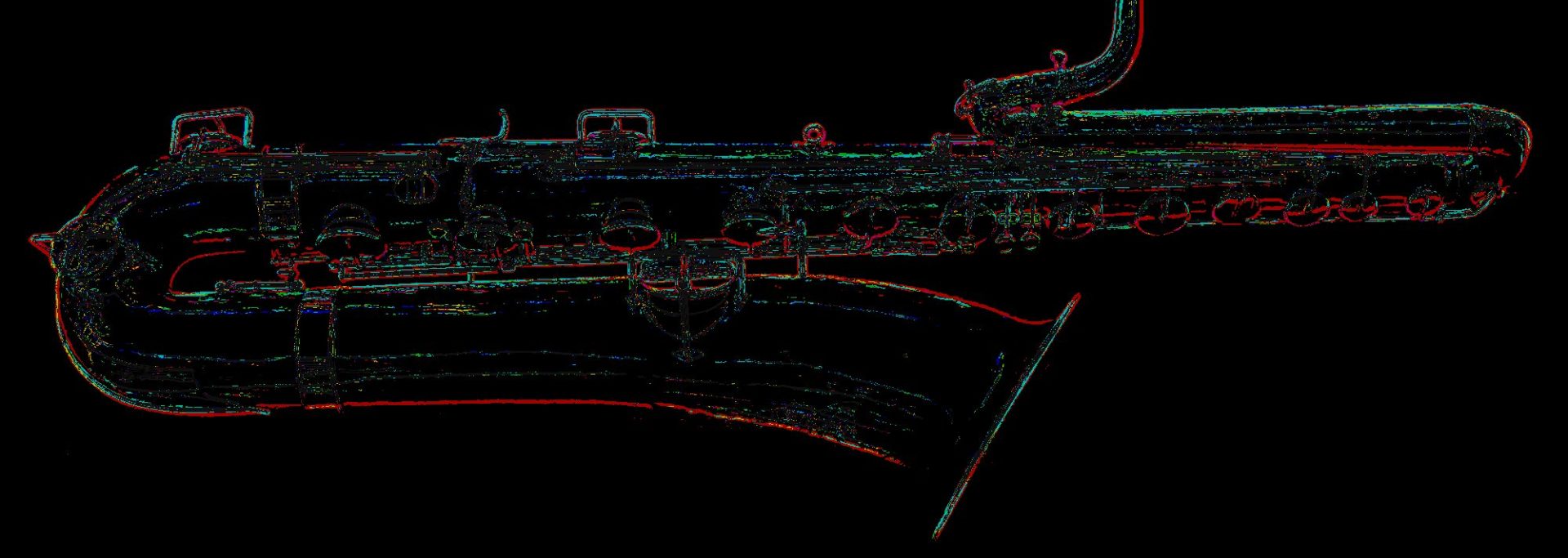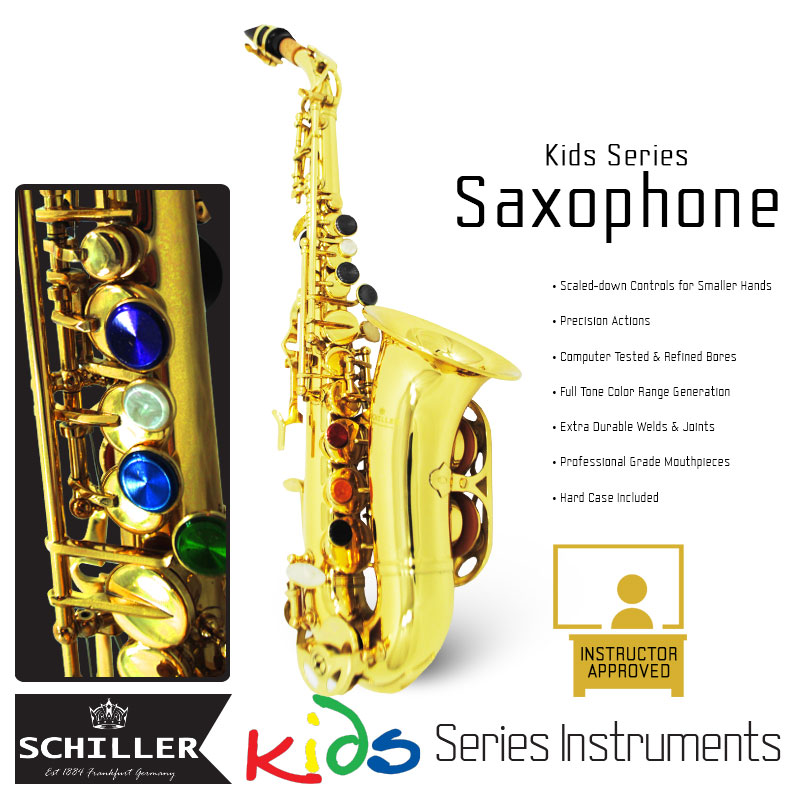Yesterday I happened across something in the Google search results that had me do a double take: the Schiller American Heritage Kids Series Saxophone. What made this saxophone so special that it stopped me mid-Google search, you ask?
Well it could be the fact the that it looks like a typical children’s beginner saxophone with reduced key work, yet still keyed to low Bb. However, this puppy seems to be a curved soprano, and not an alto like we more commonly see.
Truth be told, that wasn’t what caught my eye. The shiny, coloured baubles as key touches made me stop and take a closer look at this Schiller American Heritage Kids Series Saxophone. Those key touches made me ask: Why were they put on the horn?
Source: schillerinstruments.com
On the Schiller website, this children’s instrument is described like this:
Schiller American Heritage Kids Series
For the young players that want an extremely easy to handle instrument. Schiller quality and engineering in a small package..
Kids Series Standard Features:
• Key of Bb
• Gold Lacquer Finish
• Pearl-Finished Colored Learning Keys
• Free Blowing Design for Small Lungs
• Genuine Schiller Mouthpiece
• Hard Case Included
So, apparently the coloured key touches are “learning keys”. IMHO, it would have made more sense if the colours had only been used once on each hand. ![]() (I would think that it would get confusing to say: “Press the blue key on the left hand.” “No, not that blue key, the other one.”…)
(I would think that it would get confusing to say: “Press the blue key on the left hand.” “No, not that blue key, the other one.”…)
I also find it interesting that Schiller would opt for a curvy soprano rather than an alto. We all know how much easier a soprano is to play after all. ![]() But then playing well is perhaps not an objective of this exercise. Perhaps the goal is just to have children be able to produce a sound… Any sound…
But then playing well is perhaps not an objective of this exercise. Perhaps the goal is just to have children be able to produce a sound… Any sound… ![]()
The Schiller American Heritage Kids Series Saxophone, in context
Saxophones for young players—ergo children—is not a new concept. Although the most recent example is the Alphasax that is most likely made in some Asian country, two of the big-four American companies of the past made some version of stripped down saxophones as well.
The Buescher Academy saxophones were available in SATB varieties, and were keyed from low C to high C. Martin as well had a version of this style of saxophone, they called it the Home Model, and sold it only through mail order.
One can only presume that with the Schiller American Heritage Kids Series Saxophone, the company is attempting to elicit a feel good kind of response in parents through its careful use of the words American Heritage. Schiller’s ad execs know what people respond to, and retro Americana is quite popular with some.
Vintage curvys are a popular item, and it’s not surprising that the company sells five different curved soprano models in their regular saxophone line—two of which are American Heritage models. Here is how they [used to] describe the model:
The Attitude. The Authority. The American Saxophone Sound!
Players today are turning away from the traditional bright & harsh sounding saxophones which have become the standard tonal sound of saxophones produced for the last 25 years. Instead, players are returning to the bolder, richer and more mature tone which American Saxophones are well noted.
A vibrant, deep, rich & singing tone – our American Heritage Saxophone raises the spirit!
Sure, American Heritage is simply the name of one Schiller’s saxophone models. However, the point is that you don’t have to be musical to be drawn into the retro, feel good messaging that the model’s name elicits.
All that aside, I predict that the Schiller American Heritage Kids Series Saxophone will not sell particularly well. I don’t see a large market for these, and really not a need for them either. For nearly two centuries now players the world over have learned how to play the sax without the use of “colored learning keys”. Will they be Buescher Academy collectible of the future? Check back in 80 years or so. I’ll be long gone, but hopefully by then someone else will be writing about vintage saxophones.
Updated June 2024: URL was updated, and the price shows the following: $590.00 $267.00 With a “Send as [sic] Your Best Offer” button. Apparently these were not a big hit. 😉 Colour me shocked. ![]()
![]()




In the 30s, when almost no soprano saxes were sold or played, most of the tiny number made in the US were the curved models. All the catalogs said about them was that they were often used by small children.
Fascinating. As always Paul, you are a wealth of vintage sax information… :bow: